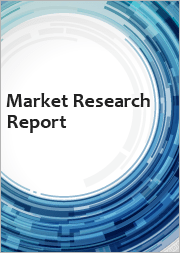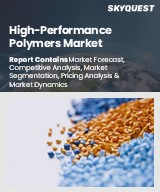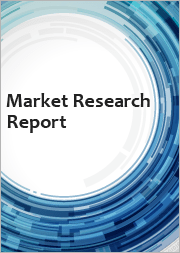
|
시장보고서
상품코드
1576848
세계의 글리시딜페닐에테르 시장 : 제품 유형, 용도, 최종 사용자 산업, 판매 채널, 기능별 예측(2025-2030년)Glycidyl phenyl ether Market by Product Type (Form, Purity Level), Application (Adhesives, Agriculture, Coatings), End-User Industry, Sales Channel, Function - Global Forecast 2025-2030 |
||||||
글리시딜페닐에테르 시장은 2023년 6,557만 달러로 평가되었으며, 2024년에는 6,763만 달러에 이를 것으로 예상되며, CAGR 3.60%로 성장하여 2030년에는 8,399만 달러에 이를 것으로 예측됩니다.
글리시딜페닐에테르(GPE)는 다양한 산업에서 사용되는 다목적 화학 화합물로 주로 에폭시 수지의 반응성 희석제로 사용됩니다. GPE의 필요성은 에폭시계의 유연성과 점도를 높이는 능력에 기인하고 있어 건축, 자동차, 전자기기 등, 내구성과 안정성이 요구되는 용도에서는 빠뜨릴 수 없는 것이 되고 있습니다. GPE는 내화학성과 내열성이 우수하기 때문에 최종 용도는 이러한 분야에 걸쳐 있습니다. 시장 인사이트에 따르면 인프라 정비에 있어서의 에폭시 수지 수요 증가와 자동차 산업이 경량 소재로의 이행을 진행하고 있는 것이 큰 성장의 가능성을 나타내고 있습니다. 그러나 에폭시 수지의 환경과 건강에 미치는 영향에 대한 규제 우려가 과제가 되어 시장 확대를 방해할 수 있습니다. 이러한 상황에도 불구하고, 환경 친화적인 배합과 바이오의 배합이 개발되어 이 분야에서의 기술 혁신의 길을 열 수 있는 기회가 있습니다. 기업은 보다 친환경적인 대체품을 생산하기 위한 연구개발에 투자함으로써 규제의 강화나 지속가능한 제품에 대한 소비자의 기호에 맞추어 이러한 동향을 활용할 수 있습니다. 또한, 소형화된 고성능 부품에 대한 수요가 지속되는 전자 산업의 성장은 시장을 더욱 강화할 것입니다. 그럼에도 불구하고 원자재 가격 변동과 엄격한 규제는 여전히 이익률에 영향을 미치는 큰 제약이 되었습니다. 혁신적인 연구는 에폭시 수지 제조에서 GPE의 효율성과 지속가능성 향상에 중점을 둘 수 있으며, 나노기술의 혁신은 고강도 복합재료 및 스마트재료에 대한 응용을 확대할 수 있음 있습니다. 전반적으로 GPE 시장은 기회와 과제 모두를 특징으로 하는 역동적인 특성을 보여주며, 재료 성능 향상과 환경 컴플라이언스에 대한 지속적인 수요에 의해 강조되며 이해관계자들은 경쟁력을 유지하고 성장을 가속하기 위해 에 선견성 있는 접근법을 채택하도록 요구되고 있습니다.
| 주요 시장 통계 | |
|---|---|
| 기준년(2023) | 6,557만 달러 |
| 예측년(2024) | 6,763만 달러 |
| 예측년(2030) | 8,399만 달러 |
| CAGR(%) | 3.60% |
시장 역학: 빠르게 진화하는 글리시딜페닐에테르 시장의 주요 시장 인사이트 공개
글리시딜페닐에테르 시장은 수요 및 공급의 역동적인 상호작용에 의해 변모하고 있습니다. 이러한 시장 역학의 진화를 이해함으로써 기업은 충분한 정보를 바탕으로 투자결정, 전략적 결정 정밀화, 새로운 비즈니스 기회 획득에 대비할 수 있습니다. 이러한 동향을 종합적으로 파악함으로써 기업은 정치적, 지리적, 기술적, 사회적, 경제적 영역에 걸친 다양한 위험을 완화할 수 있으며, 소비자 행동과 그것이 제조 비용과 구매 동향에 미치는 영향을보다 명확하게 이해할 수 있습니다.
- 시장 성장 촉진요인
- 접착제 및 밀봉제의 제조에 있어서의 글리시딜페닐에테르의 사용 확대
- 에폭시계 코팅제나 복합재료의 제조에 있어서의 용도의 확대
- 글리시딜페닐에테르를 다양한 재료에 통합하기 위한 화학 공정의 혁신
- 글리시딜페닐에테르의 생산 효율을 향상시키는 신기술의 개발
- 시장 성장 억제요인
- 글리시딜페닐에테르 제조에 있어서의 원료 부족에 의한 제조 비용의 상승
- 시장 기회
- 접착제, 실란트 제조에 있어서의 글리시딜페닐에테르 수요 증가
- 성능 향상을 위한 전자 재료에 글리시딜페닐에테르의 이용
- 생체 재료 합성에서 글리시딜페닐에테르의 성장 가능성
- 시장의 과제
- 글리시딜페닐에테르의 생산에 있어서 공급 체인의 혼란의 관리
Porter's Five Forces: 글리시딜페닐에테르 시장을 탐색하는 전략 도구
Porter's Five Forces 프레임 워크는 글리시 딜 페닐 에테르 시장 경쟁 구도를 이해하는 중요한 도구입니다. Porter's Five Force Framework는 기업의 경쟁력을 평가하고 전략적 기회를 탐구하는 명확한 기술을 제공합니다. 이 프레임워크는 기업이 시장 내 세력도를 평가하고 신규 사업의 수익성을 결정하는 데 도움이 됩니다. 이러한 통찰을 통해 기업은 자사의 강점을 활용하고, 약점을 해결하고, 잠재적인 과제를 피할 수 있으며, 보다 강인한 시장에서의 포지셔닝을 보장할 수 있습니다.
PESTLE 분석 : 글리시딜페닐에테르 시장에서 외부로부터의 영향 파악
외부 거시 환경 요인은 글리시딜페닐에테르 시장의 성과 역학을 형성하는데 매우 중요한 역할을 합니다. 정치적, 경제적, 사회적, 기술적, 법적, 환경적 요인 분석은 이러한 영향을 탐색하는 데 필요한 정보를 제공합니다. PESTLE 요인을 조사함으로써 기업은 잠재적인 위험과 기회를 더 잘 이해할 수 있습니다. 이 분석을 통해 기업은 규제, 소비자 선호, 경제 동향의 변화를 예측하고 앞으로 예상되는 적극적인 의사 결정을 할 준비를 할 수 있습니다.
시장 점유율 분석 : 글리시딜페닐에테르 시장에서 경쟁 구도 파악
글리시딜페닐에테르 시장의 상세한 시장 점유율 분석을 통해 공급업체의 성과를 종합적으로 평가할 수 있습니다. 기업은 수익, 고객 기반, 성장률 등 주요 지표를 비교하여 경쟁 포지셔닝을 밝힐 수 있습니다. 이 분석을 통해 시장 집중, 단편화, 통합 동향을 밝혀내고 벤더들은 경쟁이 치열해지는 가운데 자사의 지위를 높이는 전략적 의사 결정을 내리는 데 필요한 지식을 얻을 수 있습니다.
FPNV 포지셔닝 매트릭스 : 글리시딜페닐에테르 시장에서 공급업체의 성능 평가
FPNV 포지셔닝 매트릭스는 글리시딜페닐에테르 시장에서 공급업체를 평가하는 중요한 도구입니다. 이 행렬을 통해 비즈니스 조직은 공급업체의 비즈니스 전략과 제품 만족도를 기준으로 평가하여 목표에 맞는 충분한 정보를 바탕으로 의사 결정을 내릴 수 있습니다. 네 가지 사분면을 통해 공급업체를 명확하고 정확하게 세분화하여 전략 목표에 가장 적합한 파트너 및 솔루션을 파악할 수 있습니다.
전략 분석 및 권장 : 글리시딜페닐에테르 시장에서 성공을 위한 길을 그리기
글리시딜페닐에테르 시장의 전략 분석은 세계 시장에서의 프레즌스 강화를 목표로 하는 기업에 필수적입니다. 주요 자원, 역량 및 성과 지표를 검토함으로써 기업은 성장 기회를 파악하고 개선을 위해 노력할 수 있습니다. 이러한 접근 방식을 통해 경쟁 구도에서 과제를 극복하고 새로운 비즈니스 기회를 활용하여 장기적인 성공을 거둘 수 있는 체제를 구축할 수 있습니다.
이 보고서는 주요 관심 분야를 포괄하는 시장의 종합적인 분석을 제공합니다.
1. 시장 침투: 현재 시장 환경의 상세한 검토, 주요 기업의 광범위한 데이터, 시장 도달범위 및 전반적인 영향력 평가.
2. 시장 개척도: 신흥 시장의 성장 기회를 파악하고 기존 분야의 확장 가능성을 평가하며 미래 성장을 위한 전략적 로드맵을 제공합니다.
3. 시장 다양화: 최근 제품 출시, 미개척 지역, 업계의 주요 진보, 시장을 형성하는 전략적 투자를 분석합니다.
4. 경쟁 평가 및 정보 : 경쟁 구도를 철저히 분석하여 시장 점유율, 사업 전략, 제품 포트폴리오, 인증, 규제 당국 승인, 특허 동향, 주요 기업의 기술 진보 등을 검증합니다.
5. 제품 개발 및 혁신 : 미래 시장 성장을 가속할 것으로 예상되는 최첨단 기술, R&D 활동, 제품 혁신을 강조합니다.
또한 이해관계자가 충분한 정보를 얻고 의사결정을 할 수 있도록 중요한 질문에 대답하고 있습니다.
1. 현재 시장 규모와 향후 성장 예측은?
2. 최고의 투자 기회를 제공하는 제품, 부문 및 지역은 어디입니까?
3. 시장을 형성하는 주요 기술 동향과 규제의 영향은?
4. 주요 벤더의 시장 점유율과 경쟁 포지션은?
5. 벤더 시장 진입·철수 전략의 원동력이 되는 수익원과 전략적 기회는 무엇인가?
목차
제1장 서문
제2장 조사 방법
제3장 주요 요약
제4장 시장 개요
제5장 시장 인사이트
- 시장 역학
- 성장 촉진요인
- 접착제 및 실란트의 제조에 있어서의 글리시딜페닐에테르의 사용 확대
- 에폭시계 코팅 및 복합재료 제조에서의 용도 확대
- 다양한 재료에 글리시딜페닐에테르를 통합하는 화학 프로세스의 혁신
- 글리시딜페닐에테르 생산 효율을 향상시키는 신기술의 개발
- 억제요인
- 글리시딜페닐에테르 제조업에 있어서의 원재료 부족에 의한 생산 코스트의 상승
- 기회
- 접착제 및 실란트의 생산에 있어서의 글리시딜페닐에테르 수요 증가
- 전자 재료에 있어서의 글리시딜페닐에테르의 활용에 의한 퍼포먼스 향상
- 바이오메디컬 재료 합성에 있어서의 글리시딜페닐에테르의 성장 가능성
- 과제
- 글리시딜페닐에테르의 생산에 있어서의 공급 체인 혼란의 관리
- 성장 촉진요인
- 시장 세분화 분석
- Porter's Five Forces 분석
- PESTEL 분석
- 정치적
- 경제
- 사교
- 기술적
- 법률상
- 환경
제6장 글리시딜페닐에테르 시장 : 제품 유형별
- 형상
- 액체
- 고체
- 순도 레벨
- 순도 99% 이상
- 순도 99% 미만
제7장 글리시딜페닐에테르 시장 : 용도별
- 접착제
- 농업
- 제초제
- 농약
- 코팅
- 의약품
- 유효 의약품 성분
- 부형제
제8장 글리시딜페닐에테르 시장 : 최종 사용자 업계별
- 농업산업
- 화학산업
- 제약회사
- 연구실
제9장 글리시딜페닐에테르 시장 : 판매 채널별
- 직접 판매
- 리셀러
- 온라인 소매
제10장 글리시딜페닐에테르 시장 : 기능별
- 중급
- 반응성 희석제
- 용매
제11장 아메리카의 글리시딜페닐에테르 시장
- 아르헨티나
- 브라질
- 캐나다
- 멕시코
- 미국
제12장 아시아태평양의 글리시딜페닐에테르 시장
- 호주
- 중국
- 인도
- 인도네시아
- 일본
- 말레이시아
- 필리핀
- 싱가포르
- 한국
- 대만
- 태국
- 베트남
제13장 유럽·중동 및 아프리카의 글리시딜페닐에테르 시장
- 덴마크
- 이집트
- 핀란드
- 프랑스
- 독일
- 이스라엘
- 이탈리아
- 네덜란드
- 나이지리아
- 노르웨이
- 폴란드
- 카타르
- 러시아
- 사우디아라비아
- 남아프리카
- 스페인
- 스웨덴
- 스위스
- 터키
- 아랍에미리트(UAE)
- 영국
제14장 경쟁 구도
- 시장 점유율 분석 2023
- FPNV 포지셔닝 매트릭스, 2023
- 경쟁 시나리오 분석
- 전략 분석과 제안
The Glycidyl phenyl ether Market was valued at USD 65.57 million in 2023, expected to reach USD 67.63 million in 2024, and is projected to grow at a CAGR of 3.60%, to USD 83.99 million by 2030.
Glycidyl phenyl ether (GPE) is a versatile chemical compound used across various industries, primarily as a reactive diluent in epoxy resins, which are crucial for coatings, adhesives, and composite materials. The necessity of GPE stems from its ability to enhance the flexibility and viscosity of epoxy systems, making it indispensable in applications that demand durability and stability, such as in construction, automotive, and electronics. GPE's end-use scope spans across these sectors due to its superior chemical and thermal resistance characteristics. Market insights indicate strong growth potential driven by the rising demand for epoxy resins in infrastructure development and the automotive industry's ongoing transition towards lightweight materials. However, regulatory concerns related to the environmental and health impacts of epoxies pose challenges, potentially hindering market expansion. Despite this, opportunities lie in the development of eco-friendly and bio-based formulations, creating avenues for innovation within the sector. Companies could capitalize on these trends by investing in R&D to produce greener alternatives, thus aligning with tightening regulations and consumer preferences for sustainable products. Moreover, the electronics industry's growth, with its ongoing demand for miniaturized and high-performance components, further propels the market. Nonetheless, fluctuations in raw material prices and stringent regulations remain significant limitations affecting profit margins. Innovative research could focus on enhancing the efficiency and sustainability of GPE in epoxy resin production, while breakthroughs in nanotechnology could amplify its application in high-strength composites and smart materials. Overall, the GPE market exhibits a dynamic nature characterized by both opportunities and challenges, underscored by the constant demand for improved material performance and environmental compliance, urging stakeholders to adopt a forward-thinking approach to maintain competitiveness and drive growth.
| KEY MARKET STATISTICS | |
|---|---|
| Base Year [2023] | USD 65.57 million |
| Estimated Year [2024] | USD 67.63 million |
| Forecast Year [2030] | USD 83.99 million |
| CAGR (%) | 3.60% |
Market Dynamics: Unveiling Key Market Insights in the Rapidly Evolving Glycidyl phenyl ether Market
The Glycidyl phenyl ether Market is undergoing transformative changes driven by a dynamic interplay of supply and demand factors. Understanding these evolving market dynamics prepares business organizations to make informed investment decisions, refine strategic decisions, and seize new opportunities. By gaining a comprehensive view of these trends, business organizations can mitigate various risks across political, geographic, technical, social, and economic domains while also gaining a clearer understanding of consumer behavior and its impact on manufacturing costs and purchasing trends.
- Market Drivers
- Expanding use of glycidyl phenyl ether in the production of adhesives and sealants
- Broadening applications in the creation of epoxy-based coatings and composites
- Innovations in chemical processes to integrate glycidyl phenyl ether in diverse materials
- Development of new technologies to improve the efficiency of glycidyl phenyl ether production
- Market Restraints
- Rising production costs due to raw material shortages in glycidyl phenyl ether manufacturing
- Market Opportunities
- Rising demand for glycidyl phenyl ether in the production of adhesives and sealants
- Utilization of glycidyl phenyl ether in electronic materials for enhanced performance
- Growth potential of glycidyl phenyl ether in biomedical material synthesis
- Market Challenges
- Managing supply chain disruptions in the production of glycidyl phenyl ether
Porter's Five Forces: A Strategic Tool for Navigating the Glycidyl phenyl ether Market
Porter's five forces framework is a critical tool for understanding the competitive landscape of the Glycidyl phenyl ether Market. It offers business organizations with a clear methodology for evaluating their competitive positioning and exploring strategic opportunities. This framework helps businesses assess the power dynamics within the market and determine the profitability of new ventures. With these insights, business organizations can leverage their strengths, address weaknesses, and avoid potential challenges, ensuring a more resilient market positioning.
PESTLE Analysis: Navigating External Influences in the Glycidyl phenyl ether Market
External macro-environmental factors play a pivotal role in shaping the performance dynamics of the Glycidyl phenyl ether Market. Political, Economic, Social, Technological, Legal, and Environmental factors analysis provides the necessary information to navigate these influences. By examining PESTLE factors, businesses can better understand potential risks and opportunities. This analysis enables business organizations to anticipate changes in regulations, consumer preferences, and economic trends, ensuring they are prepared to make proactive, forward-thinking decisions.
Market Share Analysis: Understanding the Competitive Landscape in the Glycidyl phenyl ether Market
A detailed market share analysis in the Glycidyl phenyl ether Market provides a comprehensive assessment of vendors' performance. Companies can identify their competitive positioning by comparing key metrics, including revenue, customer base, and growth rates. This analysis highlights market concentration, fragmentation, and trends in consolidation, offering vendors the insights required to make strategic decisions that enhance their position in an increasingly competitive landscape.
FPNV Positioning Matrix: Evaluating Vendors' Performance in the Glycidyl phenyl ether Market
The Forefront, Pathfinder, Niche, Vital (FPNV) Positioning Matrix is a critical tool for evaluating vendors within the Glycidyl phenyl ether Market. This matrix enables business organizations to make well-informed decisions that align with their goals by assessing vendors based on their business strategy and product satisfaction. The four quadrants provide a clear and precise segmentation of vendors, helping users identify the right partners and solutions that best fit their strategic objectives.
Strategy Analysis & Recommendation: Charting a Path to Success in the Glycidyl phenyl ether Market
A strategic analysis of the Glycidyl phenyl ether Market is essential for businesses looking to strengthen their global market presence. By reviewing key resources, capabilities, and performance indicators, business organizations can identify growth opportunities and work toward improvement. This approach helps businesses navigate challenges in the competitive landscape and ensures they are well-positioned to capitalize on newer opportunities and drive long-term success.
Key Company Profiles
The report delves into recent significant developments in the Glycidyl phenyl ether Market, highlighting leading vendors and their innovative profiles. These include Aditya Birla Chemicals, Akzo Nobel N.V., Arkema S.A., Ashland Global Holdings Inc., BASF SE, Clariant AG, Dow Chemical Company, Emerald Performance Materials, Evonik Industries AG, Huntsman Corporation, Kaneka Corporation, Kowa American Corporation, LG Chem Ltd., Mitsubishi Chemical Corporation, Nippon Shokubai Co., Ltd., Perstorp Group, SACHEM Inc., Solvay S.A., Sumitomo Chemical Co., Ltd., and ZEON Corporation.
Market Segmentation & Coverage
This research report categorizes the Glycidyl phenyl ether Market to forecast the revenues and analyze trends in each of the following sub-markets:
- Based on Product Type, market is studied across Form and Purity Level. The Form is further studied across Liquid and Solid. The Purity Level is further studied across Above 99% Purity and Below 99% Purity.
- Based on Application, market is studied across Adhesives, Agriculture, Coatings, and Pharmaceuticals. The Agriculture is further studied across Herbicides and Pesticides. The Pharmaceuticals is further studied across Active Pharmaceutical Ingredient and Excipients.
- Based on End-User Industry, market is studied across Agricultural Industry, Chemical Industry, Pharmaceutical Companies, and Research Laboratories.
- Based on Sales Channel, market is studied across Direct Sales, Distributors, and Online Retail.
- Based on Function, market is studied across Intermediate, Reactive Diluent, and Solvent.
- Based on Region, market is studied across Americas, Asia-Pacific, and Europe, Middle East & Africa. The Americas is further studied across Argentina, Brazil, Canada, Mexico, and United States. The United States is further studied across California, Florida, Illinois, New York, Ohio, Pennsylvania, and Texas. The Asia-Pacific is further studied across Australia, China, India, Indonesia, Japan, Malaysia, Philippines, Singapore, South Korea, Taiwan, Thailand, and Vietnam. The Europe, Middle East & Africa is further studied across Denmark, Egypt, Finland, France, Germany, Israel, Italy, Netherlands, Nigeria, Norway, Poland, Qatar, Russia, Saudi Arabia, South Africa, Spain, Sweden, Switzerland, Turkey, United Arab Emirates, and United Kingdom.
The report offers a comprehensive analysis of the market, covering key focus areas:
1. Market Penetration: A detailed review of the current market environment, including extensive data from top industry players, evaluating their market reach and overall influence.
2. Market Development: Identifies growth opportunities in emerging markets and assesses expansion potential in established sectors, providing a strategic roadmap for future growth.
3. Market Diversification: Analyzes recent product launches, untapped geographic regions, major industry advancements, and strategic investments reshaping the market.
4. Competitive Assessment & Intelligence: Provides a thorough analysis of the competitive landscape, examining market share, business strategies, product portfolios, certifications, regulatory approvals, patent trends, and technological advancements of key players.
5. Product Development & Innovation: Highlights cutting-edge technologies, R&D activities, and product innovations expected to drive future market growth.
The report also answers critical questions to aid stakeholders in making informed decisions:
1. What is the current market size, and what is the forecasted growth?
2. Which products, segments, and regions offer the best investment opportunities?
3. What are the key technology trends and regulatory influences shaping the market?
4. How do leading vendors rank in terms of market share and competitive positioning?
5. What revenue sources and strategic opportunities drive vendors' market entry or exit strategies?
Table of Contents
1. Preface
- 1.1. Objectives of the Study
- 1.2. Market Segmentation & Coverage
- 1.3. Years Considered for the Study
- 1.4. Currency & Pricing
- 1.5. Language
- 1.6. Stakeholders
2. Research Methodology
- 2.1. Define: Research Objective
- 2.2. Determine: Research Design
- 2.3. Prepare: Research Instrument
- 2.4. Collect: Data Source
- 2.5. Analyze: Data Interpretation
- 2.6. Formulate: Data Verification
- 2.7. Publish: Research Report
- 2.8. Repeat: Report Update
3. Executive Summary
4. Market Overview
5. Market Insights
- 5.1. Market Dynamics
- 5.1.1. Drivers
- 5.1.1.1. Expanding use of glycidyl phenyl ether in the production of adhesives and sealants
- 5.1.1.2. Broadening applications in the creation of epoxy-based coatings and composites
- 5.1.1.3. Innovations in chemical processes to integrate glycidyl phenyl ether in diverse materials
- 5.1.1.4. Development of new technologies to improve the efficiency of glycidyl phenyl ether production
- 5.1.2. Restraints
- 5.1.2.1. Rising production costs due to raw material shortages in glycidyl phenyl ether manufacturing
- 5.1.3. Opportunities
- 5.1.3.1. Rising demand for glycidyl phenyl ether in the production of adhesives and sealants
- 5.1.3.2. Utilization of glycidyl phenyl ether in electronic materials for enhanced performance
- 5.1.3.3. Growth potential of glycidyl phenyl ether in biomedical material synthesis
- 5.1.4. Challenges
- 5.1.4.1. Managing supply chain disruptions in the production of glycidyl phenyl ether
- 5.1.1. Drivers
- 5.2. Market Segmentation Analysis
- 5.3. Porter's Five Forces Analysis
- 5.3.1. Threat of New Entrants
- 5.3.2. Threat of Substitutes
- 5.3.3. Bargaining Power of Customers
- 5.3.4. Bargaining Power of Suppliers
- 5.3.5. Industry Rivalry
- 5.4. PESTLE Analysis
- 5.4.1. Political
- 5.4.2. Economic
- 5.4.3. Social
- 5.4.4. Technological
- 5.4.5. Legal
- 5.4.6. Environmental
6. Glycidyl phenyl ether Market, by Product Type
- 6.1. Introduction
- 6.2. Form
- 6.2.1. Liquid
- 6.2.2. Solid
- 6.3. Purity Level
- 6.3.1. Above 99% Purity
- 6.3.2. Below 99% Purity
7. Glycidyl phenyl ether Market, by Application
- 7.1. Introduction
- 7.2. Adhesives
- 7.3. Agriculture
- 7.3.1. Herbicides
- 7.3.2. Pesticides
- 7.4. Coatings
- 7.5. Pharmaceuticals
- 7.5.1. Active Pharmaceutical Ingredient
- 7.5.2. Excipients
8. Glycidyl phenyl ether Market, by End-User Industry
- 8.1. Introduction
- 8.2. Agricultural Industry
- 8.3. Chemical Industry
- 8.4. Pharmaceutical Companies
- 8.5. Research Laboratories
9. Glycidyl phenyl ether Market, by Sales Channel
- 9.1. Introduction
- 9.2. Direct Sales
- 9.3. Distributors
- 9.4. Online Retail
10. Glycidyl phenyl ether Market, by Function
- 10.1. Introduction
- 10.2. Intermediate
- 10.3. Reactive Diluent
- 10.4. Solvent
11. Americas Glycidyl phenyl ether Market
- 11.1. Introduction
- 11.2. Argentina
- 11.3. Brazil
- 11.4. Canada
- 11.5. Mexico
- 11.6. United States
12. Asia-Pacific Glycidyl phenyl ether Market
- 12.1. Introduction
- 12.2. Australia
- 12.3. China
- 12.4. India
- 12.5. Indonesia
- 12.6. Japan
- 12.7. Malaysia
- 12.8. Philippines
- 12.9. Singapore
- 12.10. South Korea
- 12.11. Taiwan
- 12.12. Thailand
- 12.13. Vietnam
13. Europe, Middle East & Africa Glycidyl phenyl ether Market
- 13.1. Introduction
- 13.2. Denmark
- 13.3. Egypt
- 13.4. Finland
- 13.5. France
- 13.6. Germany
- 13.7. Israel
- 13.8. Italy
- 13.9. Netherlands
- 13.10. Nigeria
- 13.11. Norway
- 13.12. Poland
- 13.13. Qatar
- 13.14. Russia
- 13.15. Saudi Arabia
- 13.16. South Africa
- 13.17. Spain
- 13.18. Sweden
- 13.19. Switzerland
- 13.20. Turkey
- 13.21. United Arab Emirates
- 13.22. United Kingdom
14. Competitive Landscape
- 14.1. Market Share Analysis, 2023
- 14.2. FPNV Positioning Matrix, 2023
- 14.3. Competitive Scenario Analysis
- 14.4. Strategy Analysis & Recommendation
Companies Mentioned
- 1. Aditya Birla Chemicals
- 2. Akzo Nobel N.V.
- 3. Arkema S.A.
- 4. Ashland Global Holdings Inc.
- 5. BASF SE
- 6. Clariant AG
- 7. Dow Chemical Company
- 8. Emerald Performance Materials
- 9. Evonik Industries AG
- 10. Huntsman Corporation
- 11. Kaneka Corporation
- 12. Kowa American Corporation
- 13. LG Chem Ltd.
- 14. Mitsubishi Chemical Corporation
- 15. Nippon Shokubai Co., Ltd.
- 16. Perstorp Group
- 17. SACHEM Inc.
- 18. Solvay S.A.
- 19. Sumitomo Chemical Co., Ltd.
- 20. ZEON Corporation



















